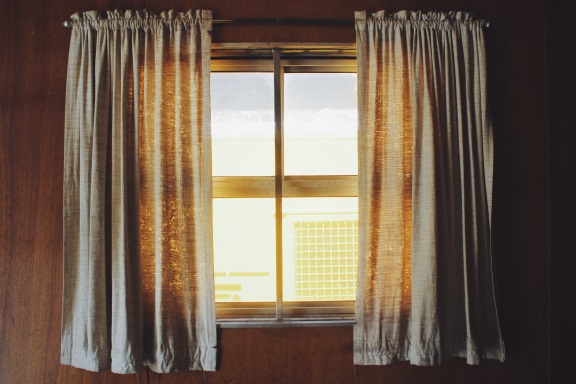Tips for Eliminating Window Condensation
 For most people window condensation can sometimes be an annoyance, but for others it can go one step further and actually cause damage to their homes—leading to rot, the growth of mold and mildew, and more.
For most people window condensation can sometimes be an annoyance, but for others it can go one step further and actually cause damage to their homes—leading to rot, the growth of mold and mildew, and more.
But what causes the condensation and, more importantly, what can you do to stop it?
In this blog, we take a look at why window condensation happens and provide guidance as to how you can eliminate it. Keep reading to learn more:
What Type of Condensation Are You Dealing with?
Broadly, there are three types of window condensation:
- Moisture on the inside of your window (interior window condensation), otherwise known as ‘sweating’, is almost always caused by excessive humidity inside your home. When the moisture-rich air comes into contact with a cool surface like a window pane, it condenses almost immediately.
- Exterior window condensation tends to show up early in the day (morning) and happens when the window itself is colder than the dew point outside.
- Condensation between the window panes typically indicates you have a broken seal on your hands.
Depending on the nature of the problem, there are different ways you can (and should) go about solving it.
What are seven reasons you should choose energy-efficient, high-performance windows? Read our blog to find out!
Eliminating Interior Window Condensation
The best way to handle interior window condensation is by taking steps to reduce the humidity inside your home:
- Turn down humidifiers or use dehumidifiers to either limit the amount of moisture you’re putting into the air or actively remove the moisture from it. Additionally, you should make sure you’re using exhaust fans in kitchens and bathrooms to quickly vent moist air.
- Air out your home, letting the fresh and in and the stale air out. Keep in mind that, especially during the summer months, you need to make sure you’re doing this only on days when the air is dry.
- Make sure you have adequate ventilation in your attic. Attic insulation and ventilation play crucial roles throughout the year in moderating your home’s temperature and moisture levels, retaining warm air during the winter and releasing it during the summer.
- Concentrate your house plants in a single area, and don’t over-water them.
If after taking these actions the condensation persists, contact a heating contractor to install or inspect an outside air intake for your furnace or put ventilation fans in key spots (like for gas-burning heaters and appliances).
Keep an eye on your windows and the areas around them as although the moisture won’t damage the glass panes, it can harm the trim, walls, and ceilings if left unattended for too long.
Eliminating Exterior Window Condensation
This type of condensation shouldn’t be too much cause for concern. Much like with the moisture that shows up on the car, once the sun comes up and warms your windows a bit the water will simply evaporate.
Eliminating Condensation between Window Panes
If you have condensation appearing between your window panes, there are two things you should do.
Start by giving your windows a good clean to make sure you’re not just dealing with some type of buildup. Once you’ve done that, you can confirm that the moisture is definitely located in between the panes. If it is, you may need to start thinking about replacing your windows.
Window Replacements
 Also called a “pocket window replacement” or “retrofit window replacement”, this approach allows you to keep your existing trim surrounding window and replace only the actual window.
Also called a “pocket window replacement” or “retrofit window replacement”, this approach allows you to keep your existing trim surrounding window and replace only the actual window.
It’s less invasive, isn’t as expensive, and makes it easier to maintain the look you love.
Full-Frame Window Replacements
With a full-frame window replacement, the whole window (panes and frame as well as other components like brickmoulds, casings, and jamb extensions) will be taken out as part of a more comprehensive restoration. The additional insulation added to the window also makes it more energy efficient, and a full-frame replacement allows you to identify mold and rot issues that can affect your windows.
Although a full-frame replacement costs more, it means there won’t be any hidden damage left to linger.
Learn more about our window replacement services.
To make sure you select the right windows, contact an experienced home contractor who can work with you to assess your needs and provide energy-efficient, high-performance replacement windows for your home.
At Quality Exteriors, we are experts at helping you find the ENERGY STAR windows that will fit your home and save you money. Contact us today to request a free in-home consultation!
Serving homeowners in St. Catharines, Niagara, Hamilton, Burlington, and Oakville.
Like this? You might also like:
- Drafty? Don’t Lose Money on Leaky Windows and Doors
- Can New Windows Really Save You Money?
- Are Your Home’s Windows Outdated? What You Need to Know about Full Frame Window Replacements
- When to Request an Estimate for Exterior Work - February 26, 2020
- Merry Christmas from Quality Exteriors - December 18, 2019
- Quality Exteriors Listed In Top 3 Window Companies In St. Catharines - December 5, 2019






